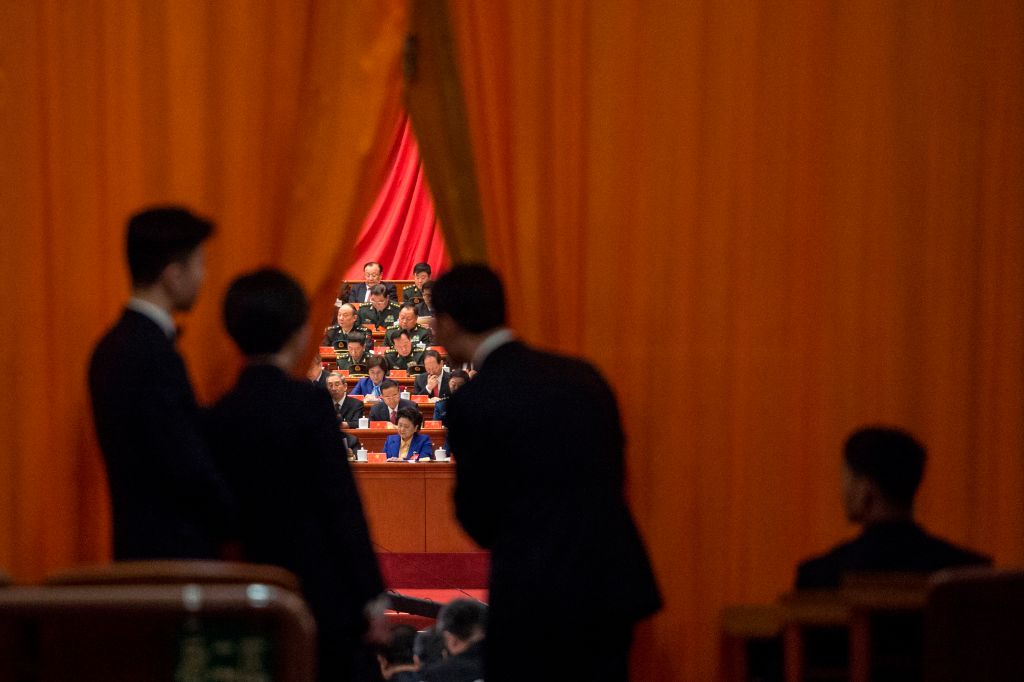
Could Xi Jinping be toppled by a coup d’état? In China coup, Roger Garside describes precisely such a scenario—a coup mounted by Xi’s rivals to push him into retirement prior to the November 2022 national congress of the Chinese Communist Party at which he expects to be extended for another five years as general secretary, or perhaps even anointed as chairman for life.
Garside has had an illustrious career in the financial sector and as a diplomat, including two stints at the British embassy in Beijing. In China coup he applies his extensive experience to map out a plausible scenario for Xi’s ouster.
The coup is led by Xi’s rivals in the top leadership, Premier Li Keqiang and Politburo Standing Committee member Wang Yang, respectively the second- and fourth-ranking members of the CCP. They are supported by Vice President Wang Qishan and several top generals. The coup leaders strongly rebuke Xi for his misguided policies, force him to take immediate retirement and nominate Li to replace him. Significantly, they also initiate political reforms to put China on the path to democratisation.
China seeks to portray itself as a political monolith whose leadership enjoys unquestioning support. In reality, its political divisions run deep. To put Garside’s coup scenario in context, one needs to go back to the 2007 party congress, which decided who would take over from party secretary Hu Jintao in 2012. At the start of the congress, Li Keqiang, a reform-minded member of the Communist Youth League faction, was the frontrunner, strongly supported by Hu. The number two slot of premier was intended for Xi. Following much infighting, however, Li lost out to Xi, who at the time was backed by Hu’s predecessor Jiang Zemin.
Once Xi rose to power in 2012, he reduced the membership of China’s key decision-making body, the Politburo Standing Committee, from nine to seven and loaded it with his own supporters. As a result, Li and Wang Yang are the only committee members who belong to the reformist ‘opposition’. During his nine years in power, Xi has made every effort to marginalise Li, even stripping him of the finance portfolio traditionally held by the premier. He has also limited the role of ‘opposition’ institutions, in particular Hu’s and Li’s power base, the Communist Youth League.
Xi’s subsequent moves to bolster his own position and build a personality cult have aggravated party elders and regular Chinese alike. A recent essay by retired premier Wen Jiabao that was seen as indirectly critical of Xi faced widespread viewing restrictions, while the recent introduction of ‘Xi Jinping thought’ in the school curriculum has caused consternation among Chinese parents.
Xi’s campaign to weed out corruption—and political opponents—has gained him many enemies, as have moves to reshape China’s business, political and cultural landscape. China’s regulators have recently imposed strict conditions on large companies in the tech, online education and video gaming sectors, in the process wiping out a significant portion of their market value. New restrictions on ‘socially harmful behaviour’ have also proved unpopular.
The events in the first and last chapters of Garside’s book are fictitious, although the characters are real. The rest of the book discusses China’s myriad problems and Xi’s shortcomings. Significantly, Garside notes that Xi has moved China from authoritarianism to the brink of outright totalitarianism.
The coup described in the book is triggered by the threat of a financial war with the United States that would play havoc with China’s economy. But Xi’s ouster is intended to address a long list of grievances, bring about leadership change and usher in political reform.
Garside draws two important historical parallels. First, he reminds us of the disaster wrought on China by Mao Zedong through the 1958–1962 Great Leap Forward and 1966–1976 Cultural Revolution, suggesting that Xi’s increasingly hard-line state-driven policies could take China towards another disaster.
Second, Garside reminds us of the power struggle surrounding Mao’s death, and its relevance to the present day. When Zhou Enlai died in early 1976, eight months before Mao, widespread demonstrations in support of the popular premier were suppressed. The heir apparent, Deng Xiaoping, was then ousted, followed, after Mao’s death, by the arrest of the widely disliked Gang of Four, the short-lived reign of Mao’s chosen successor Hua Guofeng, and Deng’s comeback.
By further centralising power with himself, and without a clear heir, Xi could be setting China up for a repeat of Mao’s chaotic succession.
It is widely assumed that next year’s party congress will either extend Xi for a third five-year term as general secretary or, better still from Xi’s point of view, elevate him to his desired position as party chairman. The title has not been used since the days of Mao and is closely associated with his dictatorship.
Garside’s book serves as a timely reminder that there are deep divisions within the CCP, that many of Xi’s policies are vastly unpopular, and that he has powerful enemies among the party’s top leaders. Most importantly, Garside reminds us that the outcome of the 2022 party congress is not a done deal.

